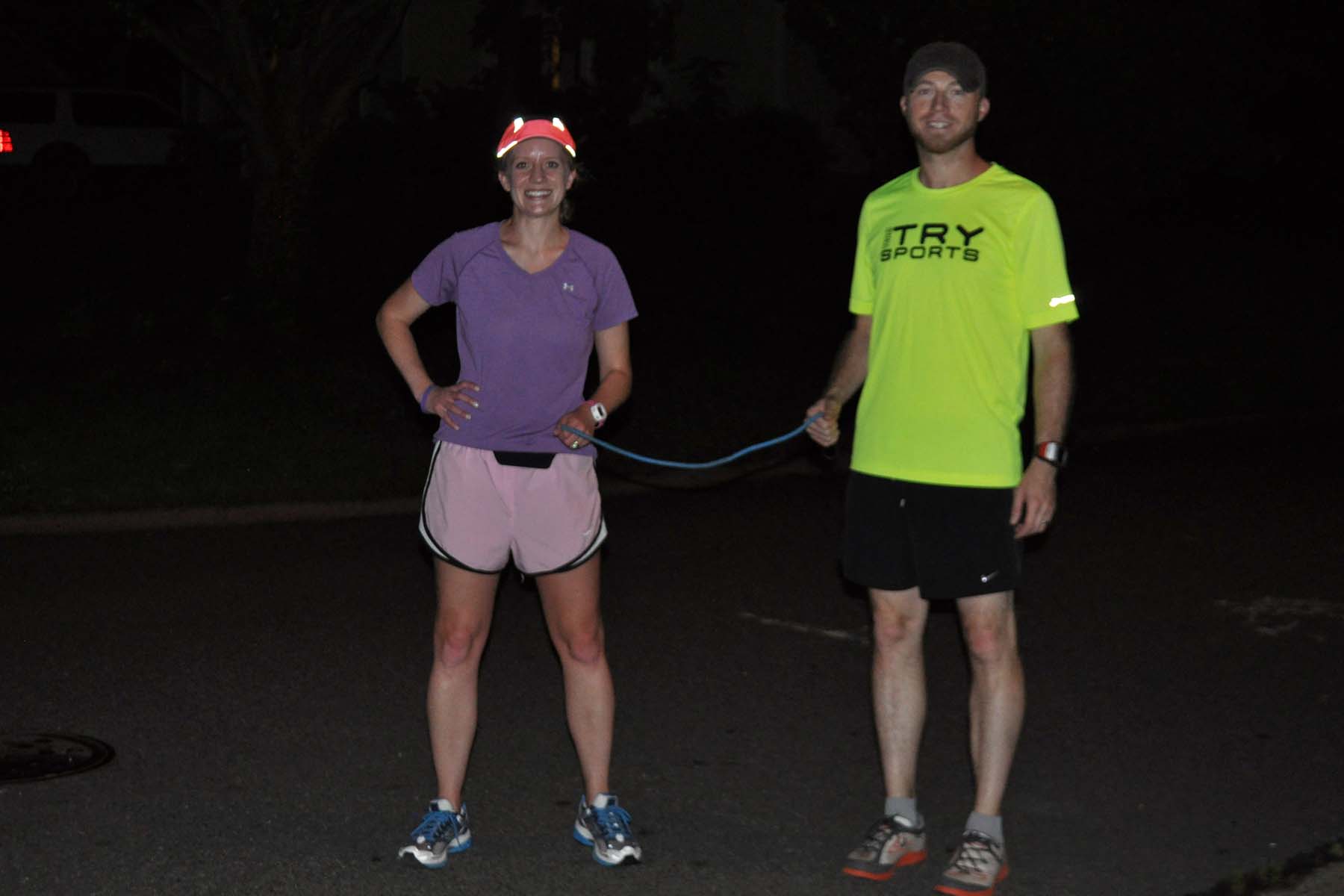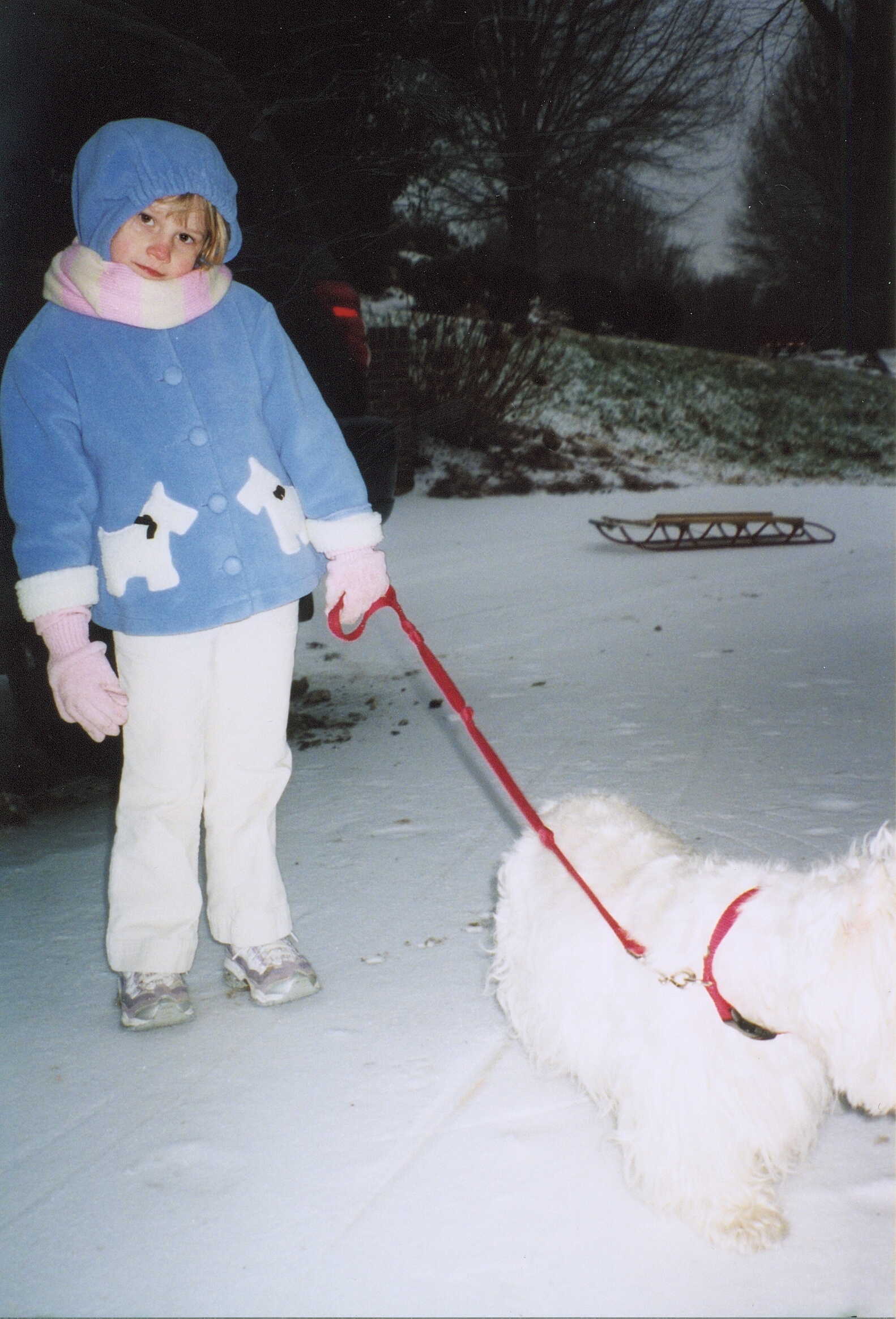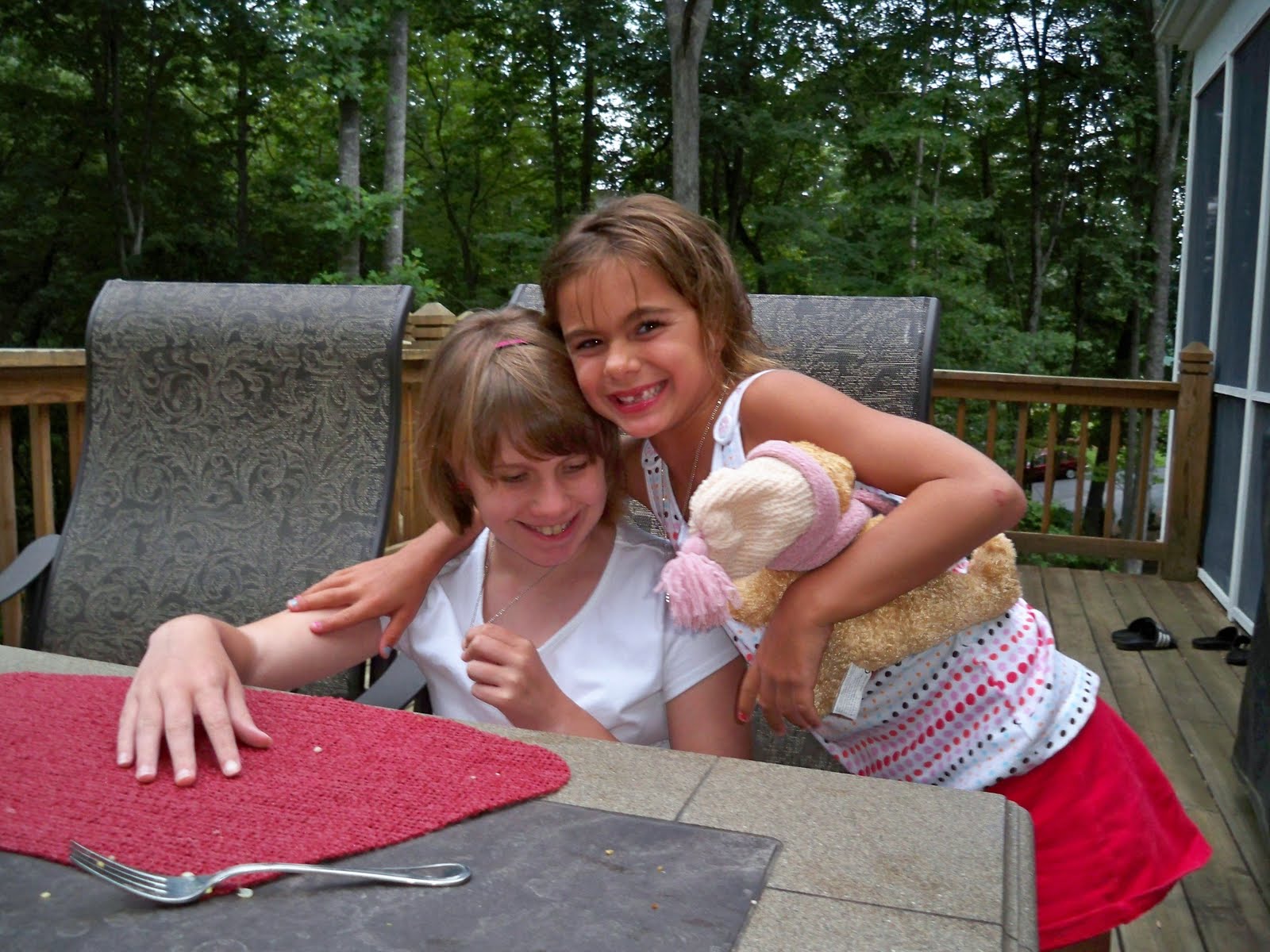 Meet my pinch runner for my blindfolded runs – my better half, John. After work tonight, John offered to take me out again – or, as he likes to say, “take his wife for a walk” (on the bungee cord, which does kind of look like a short leash from more than five feet away).
Meet my pinch runner for my blindfolded runs – my better half, John. After work tonight, John offered to take me out again – or, as he likes to say, “take his wife for a walk” (on the bungee cord, which does kind of look like a short leash from more than five feet away).
We struck out just a few minutes after 7 p.m., so we had plenty of daylight left. I pulled the blindfold down over my eyes for the 11th time overall, but just the second time before sunset.
Running in the “dark” opened my eyes to a whole new world; in all of my previous training runs, I’ve heard sounds and felt sensations that were always there but drowned out by the wealth of visual information I’m able to take in and process with the 20-20 vision I get from strong contact lenses or glasses. I’ve picked out single notes from cricket symphonies and come to know the touch and feel of warm raindrops on sweat-soaked skin.
I’ve picked out single notes from cricket symphonies and come to know the touch and feel of warm raindrops on sweat-soaked skin.
But running in the dark under the watchful eye of the sun is an entirely different experience. As John led me around our neighborhood to help me train to run a half marathon blindfolded in honor of a girl who’s anything but ordinary, suburban noise – the soundtrack of life as usual – filled my ears. A young boy said goodbye to his grandma; car doors closed. Kids played in a cul-de-sac while their moms stood in a driveway and talked. A dog got away from its owner and ran toward us, so we practiced coming to a stop without adding an unwanted flip and roll. A woman taking a walk said “That’s amazing” when she approached us.
John and I don’t live in a small neighborhood; with 800 houses inhabited by mostly families, we easily have over 3,000 neighbors. But it’s still a small corner of the world when you consider that seven billion people live on this planet. And yet, so much life – so many memories – happened in the short time it took my husband and me to run three blindfolded miles on its streets. I can’t tell you a single thing about what that boy or his grandma looked like or what game those kids played, what kind of dog came to say hello to us or if the walker had kind eyes. I love my blind runs, but I miss a lot, too.
Batten disease steals so MUCH from my sister. And that’s just the blindness. When I pull that blindfold down over my eyes, I disable my vision, but I don’t give myself seizures or cognitive impairment; I don’t take away my ability to walk – in fact, my legs work just fine (even though my ankles are another story); and when I get a runner’s high, I feel invincible, like maybe I’ll live forever.
But then, the run ends, and I take the blindfold off, and I’m just me again – the sister who got a healthy copy of the Batten disease gene. Taylor didn’t do anything to deserve two bad copies of that gene. It makes me mad as hell that she got them anyway. And I’ll never stop running for her.
But then, the run ends, and I take the blindfold off, and I’m just me again – the sister who got a healthy copy of the Batten disease gene.
I will run the Thunder Road Half Marathon blindfolded to support gene therapy co-funded by Taylor’s Tale at the University of North Carolina Gene Therapy Center. Donations to this cause are 100 percent tax-deductible. To support my run and our fight to develop treatments for Batten disease and other genetic diseases, click here.
Join the Taylor’s Tale team at Thunder Road! Click here to register for the marathon, half marathon or 5K. On the second page of registration, under “Event Groups/Teams,” select “Taylor’s Tale” from the list under “Choose an Existing Group.” Run for us to help raise awareness on race day. Stay tuned for more details, including special shirts for team members and an informal post-race event!



